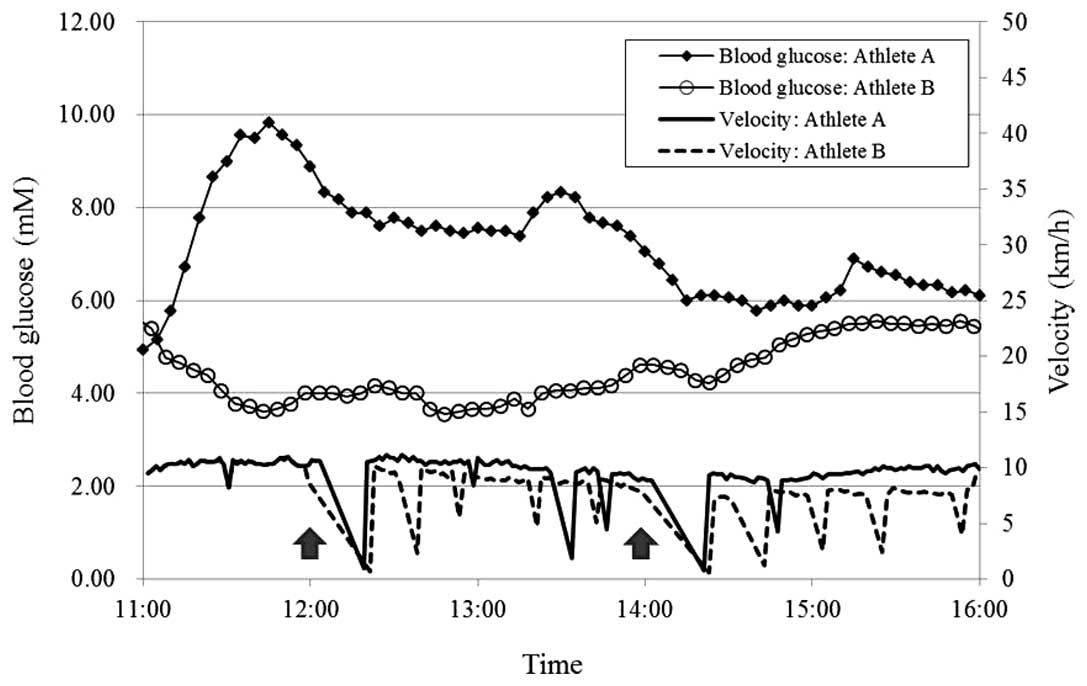Different training status may alter the continuous blood glucose kinetics in self‑paced endurance running
- Authors:
- Published online on: June 23, 2015 https://doi.org/10.3892/etm.2015.2587
- Pages: 978-982
Metrics: Total
Views: 0 (Spandidos Publications: | PMC Statistics: )
Total PDF Downloads: 0 (Spandidos Publications: | PMC Statistics: )
Abstract
The main purpose of the systemic energy metabolism is to provide a source of energy, mainly glucose, for the brain; therefore, blood glucose levels would be expected to correlate with exercise performance. The individual training status may also affect the blood glucose levels. The aim of the present study was to assess the association between blood glucose levels and running velocity during prolonged running in athletes with different training statuses. Two female college athletes, a triathlete and a tennis player, ran a course that was 247.4 m in circumference for 5 h while wearing a continuous glucose monitoring system. Blood was obtained at time‑points of ‑1, 1, 3 and 5 h. The athletes had free access to food and fluids throughout the run. The athletes ran at almost the same pace without a sudden decrease in pace. The blood glucose levels increased and remained high in the triathlete, whereas the tennis player remained hypoglycemic throughout the run. Carbohydrate ingestion did not affect the blood glucose levels. The magnitude of hormonal changes, e.g. insulin, adrenaline and cortisol, was greater in the tennis player. The blood glucose concentration did not correlate with the running velocity or the carbohydrate ingestion; however, a discrepancy in blood glucose transition was observed between the triathlete and the tennis player, indicating a possible association between the adaptation to endurance exercise and the blood glucose kinetics during prolonged running.










